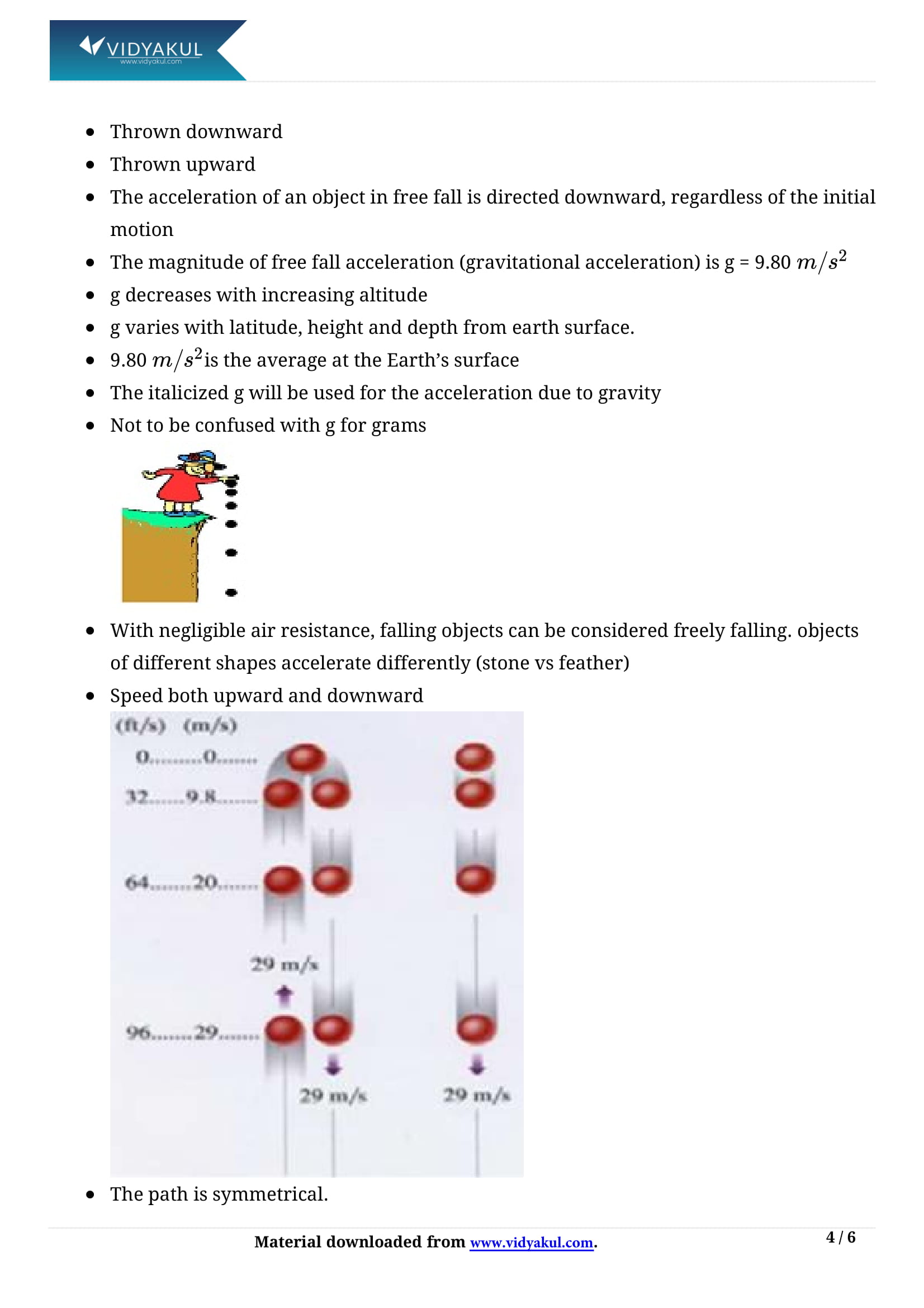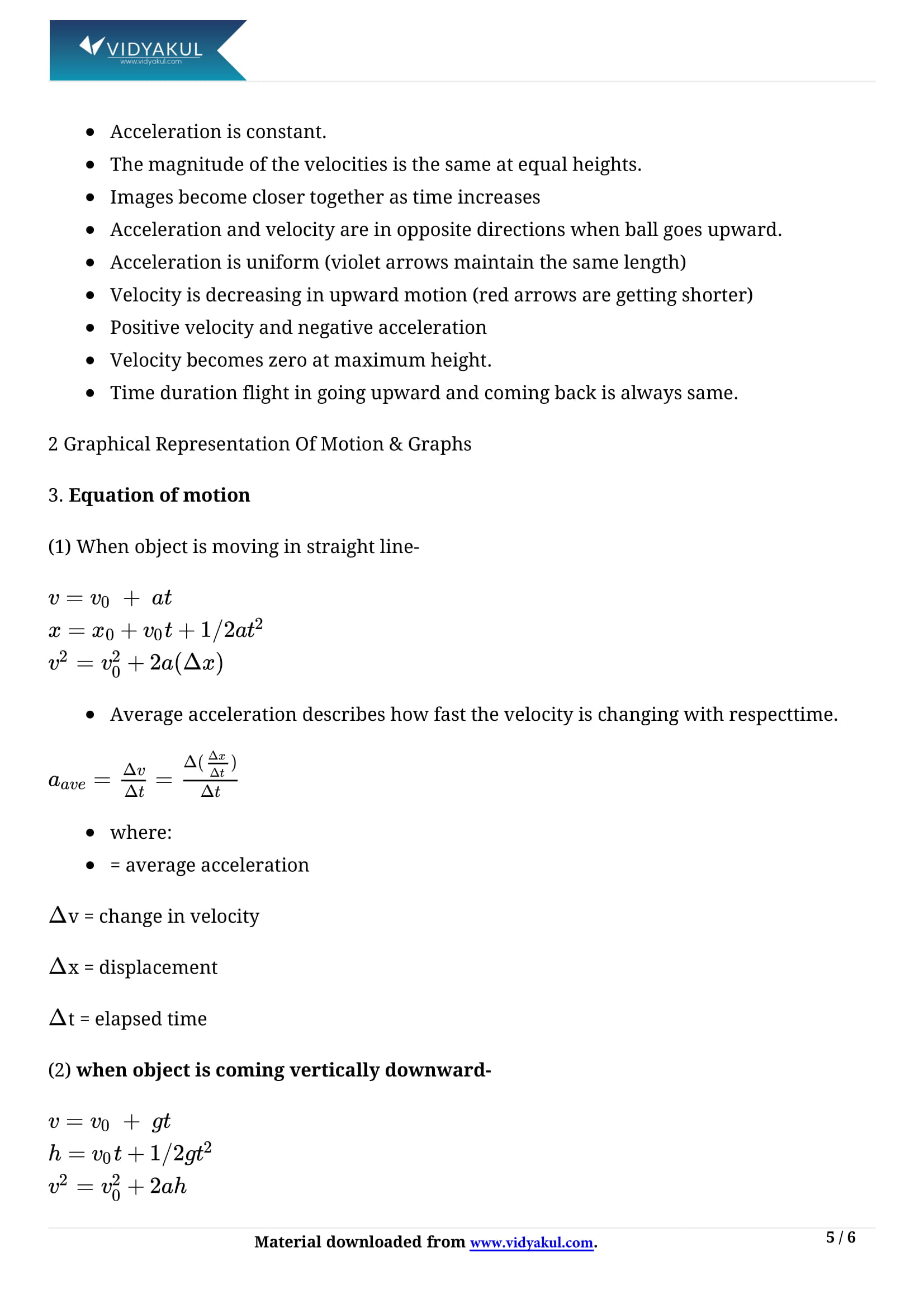Motion Class 9 Notes

Chapter 8 Motion
The NCERT Class 9 Science Chapter 8 notes is dedicated to the topic of “Movement”. This is an important chapter in the CBSE Class 9 Science Program. It explains everything about movement, speed and important concepts related to it. Therefore, relying on NCERT notes is essential. Vidyakul provides students with a detailed CBSE notes to Chapter 8 of Class 9 Science.
Academic experts develop the Vidyakul Class 9 NCERT notes for propulsion after extensive research. In addition to the NCERT notes, Vidyakul provides over 600 exercises for Class 9 Chapter 8. These exercises will also help you understand how to answer questions. Students can have a Motion Class 9 NCERT notes for their annual exam.
Scroll to learn more.
CBSE CLASS 9th CH-8
Points to Remember
Some of the important points to remember from Motion are as follows:
A reference point or origin is required to describe the position of an object. To one observer, an object may appear to be moving while remaining stationary to another.
Distance is the size of the distance travelled by a moving item. It has no use.
Distance cannot be 0, but displacement can.
Only magnitude can be used to express scalar numbers.
The length of an event, measured in seconds, is called time.
The majority of physical phenomena happen in relation to time. It has a scalar value.
Speed is the rate at which a distance changes.
Topics and Sub-topics
Every day we see numerous moving objects. For example, flying birds, swimming fish, moving bodies, moving cars, wind blowing, etc. Sometimes objects appear to be motionless, but in fact they can. This is called relative motion. In this chapter, students learn about various concepts related to movement.
Students can practice these movement concepts by watching Vidyakul Exemplar videos. Vidyakul also provides free study materials to help students learn. This makes test preparation easier. Before we dive into the questions and answers in Chapter 8 Science for Grade 9, let's look at the topics shown below.
Few Important Questions
What is ‘motion’?
When any object moves from one point to another with respect to the observer, then this object is said to be in ‘motion’.
Is this chapter difficult?
If a student fully understand the concept of the chapter ‘motion’ and practices sums regularly, then he/she can score good marks in this chapter.
Are the derivations in this chapter difficult?
There are derivations in this chapter and these need to be practised constantly.
A reference point or origin is required to describe the position of an object. To one observer, an object may appear to be moving while remaining stationary to another.
Distance is the size of the distance travelled by a moving item. It has no use.
Distance cannot be 0, but displacement can.
Only magnitude can be used to express scalar numbers.
The length of an event, measured in seconds, is called time.
The majority of physical phenomena happen in relation to time. It has a scalar value.
Speed is the rate at which a distance changes.
What is ‘motion’?
Is this chapter difficult?
Are the derivations in this chapter difficult?
Know more about the same in Motion Class 9 Notes pdf.
Download this solution for FREE Download this PDF
Download Vidyakul App for more Important videos, PDF's and Free video lectures.









